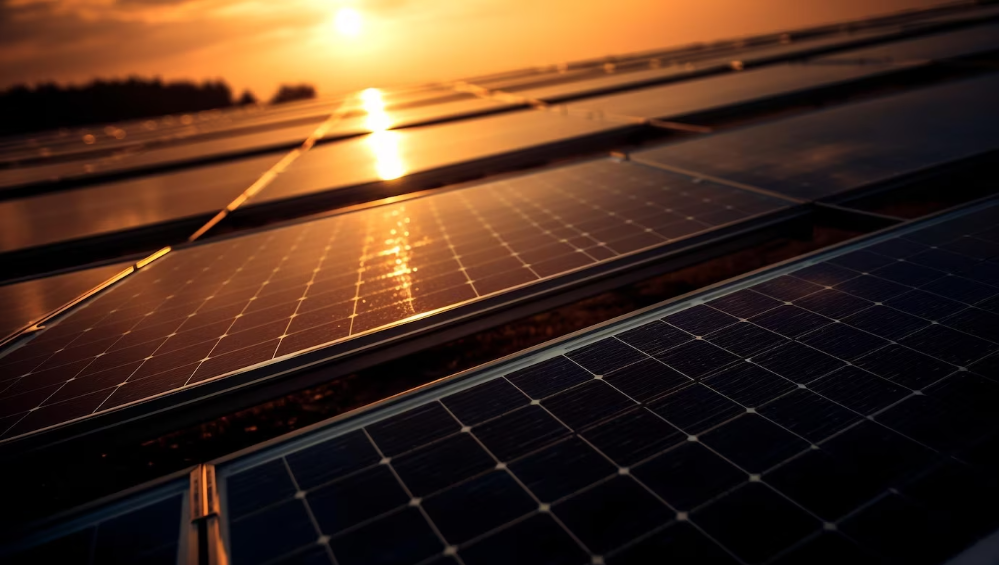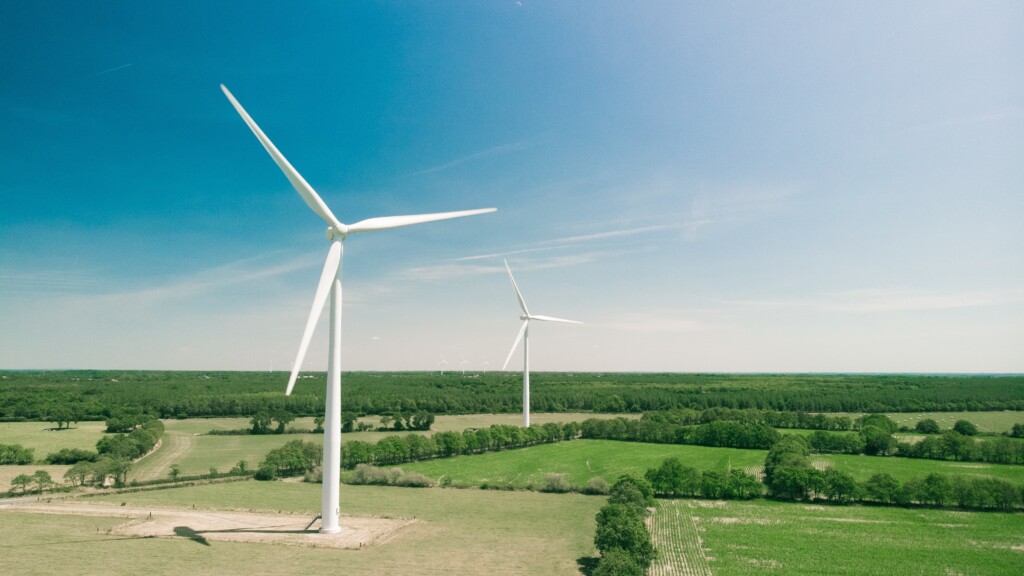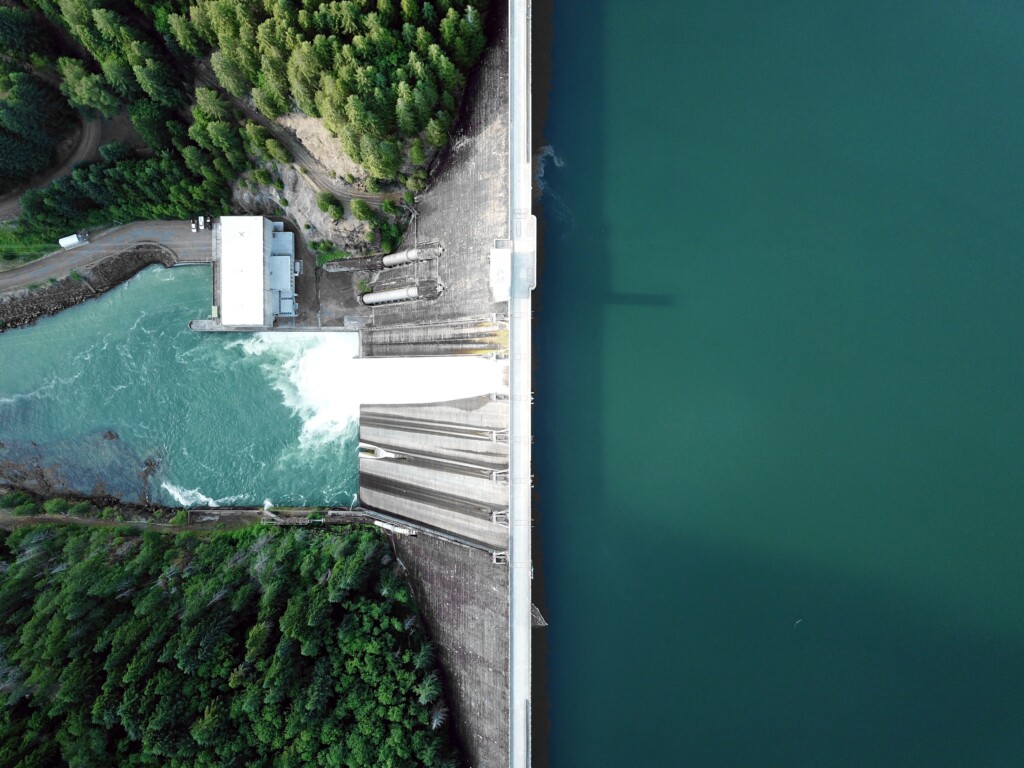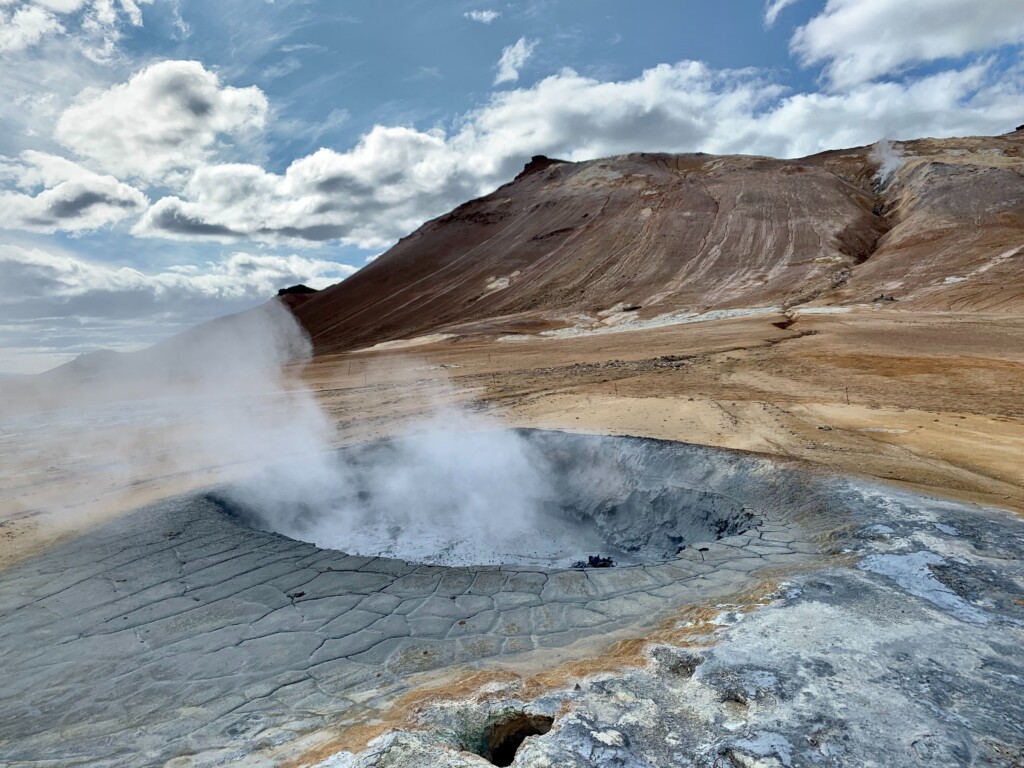Picture planet Earth to be a never-ending party that has been going on for millennia. We humans have been having a great time, fueled by what we thought were the best energy snacks available: fossil fuels. But, as it turns out, fossil fuels are the junk food of energy—they may taste good, but they are wreaking havoc on the health of our planet. But green energy, the organic, farm-to-table alternative, is assisting us in keeping the celebration going without destroying our home!
In a nutshell, green energy is the energy world’s superhero. It uses the powers of sunlight, wind, water, and geothermal heat to save the day. These natural resources are constantly renewed, and they have a considerably lower environmental impact than their fossil fuel equivalents. In this guide, we’ll get to the history of green energy, its progress over time, and how the globe is adopting it. We’ll define the technical words too, but don’t worry—we’ll keep things simple, informal, and interesting. Let’s get started!
No, green energy is not a passing fad; it is the key to unlocking a more sustainable future for all of us. Green energy is the secret weapon we need to keep our planet thriving for future generations by reducing greenhouse gas emissions and mitigating climate change. Simply explained, greenhouse gas emissions are the equivalent to rolling down your car’s windows on a hot day. Just as windows trap hot air inside and make it stuffy, greenhouse gases trap heat from the sun and cause the Earth to become overheated.
Excess greenhouse gasses in the atmosphere can cause a variety of issues, including harsh weather and rising sea levels. We may however cut greenhouse gas emissions by tapping into green energy sources such as solar and wind power. It’s roughly like rolling down your car windows to let in some fresh air. We can help keep the globe cool by using clean energy and preventing more environmental damage.
Ok, I think it’s time to talk about the climate crisis. The climate crisis is like that unwanted guest who shows up at a party and refuses to leave. With rising global temperatures, more extreme weather events, and melting arctic ice, we must say goodbye to this visitor. We are releasing greenhouse gasses into the atmosphere as a result of human activities such as the use of fossil fuels, which trap heat from the sun and cause global temperatures to rise.
Temperature rises are producing a slew of issues, including extreme weather events, melting polar ice caps, and increasing sea levels. For example, the World Meteorological Organization said 2020 was one of the three warmest years on record. If we do not take action to cut greenhouse gas emissions, the climate problem will worsen. Sea levels have risen by nearly 8 inches (21 cm) since 1880, according to NASA, and the pace of rise is accelerating. This could result in extensive flooding and coastal damage.
However, the good news is that we can take steps to mitigate the effects of the climate crisis. We can cut greenhouse gas emissions and create a more sustainable future by shifting to clean energy sources such as solar and wind power. Indeed, the International Energy Agency believes that achieving net-zero emissions by 2050 is feasible, but it will necessitate a rapid and widespread transformation of the energy sector.
When the COVID-19 epidemic struck, it was as if someone had pressed the pause button on our lives. Nature decided to make a reappearance when we were all huddled down indoors. Lockdowns and travel restrictions, according to a United Nations Environment Programme (UNEP) assessment, reduced greenhouse gas emissions and air pollution in many parts of the world. In New Delhi, one of the world’s most polluted cities, for example, air quality improved by 60% during the first week of lockdown. For the first time in years, the canals in Venice, Italy, turned clear, and fish could be seen.
The pandemic highlighted the delicate balance between humans and nature, as well as the necessity to transition to cleaner energy sources. The epidemic also emphasized the importance of developing a more robust and sustainable energy infrastructure. Investing in renewable energy can help create jobs, increase economic growth, and reduce greenhouse gas emissions. Ahead of COP27, IRENA’s General Director, Francesco La Camera, said “Governments are not on track to limit global warming to 1.5°C. Renewable-based energy transition is the only realistic way to cut emissions by 2030.”
So, let us apply what we’ve learned from the pandemic to build a more sustainable future. We can construct a more robust and cleaner energy system for future generations by investing in renewable energy sources such as solar and wind power.
You know that big ball of fire in the sky? It turns out it’s not just for getting a tan. From the ancient Greeks and Romans employing passive solar design in their structures to the advent of solar cells in the 1950s, mankind have been harnessing the power of the sun for centuries. Solar energy is becoming a shining star in the green energy industry, thanks to better efficiency and cost.

Solar energy is a type of renewable energy that generates electricity by harnessing the power of the sun. It operates by turning sunlight into electricity via solar panels, which are composed of photovoltaic cells that absorb and convert sunlight into direct current (DC) electricity. This electricity is then turned by an inverter into alternating current (AC) electricity, which can be utilized to power homes, companies, and even large cities.
One of the primary benefits of solar energy is that it is a clean and renewable energy source. Solar energy systems emit no toxins or emissions, making them a great alternative to fossil fuels. Furthermore, solar energy can help reduce our reliance on nonrenewable energy sources, which can lead to lower energy costs and less environmental damage. But not so fast, there are some drawbacks to using solar energy. For one thing, the initial cost of installing solar panels can be extremely costly, making it difficult for many households and companies to get started. If you’re an engineer and want to cut back on some costs, you could even consider building your own solar panel system. Furthermore, solar panels necessitate a large amount of area for installation, which may not be viable for everyone. But for this issue, scientists are working on solar paint (fingers crossed). Finally, solar energy output is affected by the amount of sunshine available, which varies according to weather and time of day.
Despite these challenges, solar energy is gaining popularity around the world. China, the United States, and Germany are in the forefront of solar energy generation, with many others close behind. Large-scale expenditures in infrastructure and technology will be required to transition to solar energy. To encourage individuals and companies to use solar energy, governments might provide incentives such as tax cuts or subsidies.
Consider the last time you flew a kite on a breezy day. Imagine if we could harness all of that wind energy and use it to generate electricity. We can, it turns out! Wind energy has gone a long way since the invention of windmills in ancient Persia to today’s enormous offshore wind farms. It’s like solar energy’s cool, breezy cousin, ready to sweep in and save the day.
Wind energy is another type of renewable energy that uses the wind’s power to generate electricity. Wind turbines are used to transform the kinetic energy of the wind into mechanical power that can be used to generate electricity. A generator then converts this electricity into useful power.

Wind energy has the advantage of being a clean and renewable source of energy. Wind turbines emit no toxins or emissions, making them an attractive alternative to fossil fuels. Furthermore, wind energy can help reduce our reliance on nonrenewable energy sources, which can lead to lower energy costs and less environmental damage.
However, there are some drawbacks to using wind energy. For one thing, wind turbines may be rather expensive to build, making them out of reach for many individuals and companies. Wind turbines can also be noisy and have an affect on the surrounding scenery, which can be an issue for some communities. Finally, wind energy production is affected by the amount of wind available, which varies depending on the weather and time of day.
Despite these challenges, wind energy is gaining popularity around the world. Wind energy production is led by countries such as China, the United States, and Germany, with many others close behind. To transition to wind energy on a bigger scale, infrastructural and technical expenditures will be required. To encourage families and businesses to embrace wind energy, governments might provide incentives such as tax cuts or subsidies.
Water has always been a tremendous force, and we’ve learned to harness its power using hydro energy. Hydro energy is the trusty, persistent buddy we can always count on in the green energy world, from ancient water wheels to modern dams and run-of-the-river systems.
Hydro energy, commonly known as hydropower, is a type of renewable energy that generates electricity by harnessing the power of moving water. Dams or run-of-the-river systems, which employ the power of water to turn turbines and create electricity, can be used to accomplish this.

One of the primary benefits of hydro energy is that it is a clean and renewable energy source. Hydropower systems emit no toxins or emissions, making them a great alternative to fossil fuels. Furthermore, hydro energy has the capacity to generate large amounts of electricity, making it a dependable source of energy for many communities. Hydropower facilities can power entire cities and can also be combined with other renewable energy sources to build hybrid energy systems.
Yes, there are some drawbacks to using hydro energy too. The environmental impact of large-scale hydropower projects is one of the key problems. Dams can disturb ecosystems and change the normal flow of rivers, causing harm to wildlife and aquatic habitats. Furthermore, the construction of large dams can be costly and necessitate significant infrastructure investments.
Still, hydro energy is widely used throughout the world. Countries such as China, Brazil, and Canada are in the forefront of hydropower generation, with many others close behind. To transition to hydro energy on a greater scale, infrastructural and technology expenditures will be required. To encourage people and businesses to use hydro energy, governments might provide incentives such as tax cuts or subsidies.
To put it simply, geothermal energy is the heat energy released from the Earth’s core and stored as hot water and steam beneath the planet’s crust. It can be utilized for both heating and cooling, as well as being harnessed through geothermal power plants to generate electricity.
But it’s not always smooth sailing and clear skies. For one thing, geothermal resources are not fairly spread throughout the world. To access it, you must be in an area with considerable volcanic or tectonic activity. Even so, drilling beneath the earth’s crust can be costly and hazardous to the environment.
Another difficulty is that the quality of the geothermal resource might deteriorate over time as the earth’s crust changes. This may imply moving drilling sites or discovering new resources entirely. Furthermore, if not properly managed, geothermal power plants can emit greenhouse gasses and other pollutants.
Despite these challenges, geothermal energy remains a promising renewable energy source that can help reduce greenhouse gas emissions while also providing reliable power. We can continue to unlock its potential by investing in research and development and minimizing the environmental implications of manufacturing.

Governments throughout the world have begun to cheer on green energy by adopting regulations and incentives to stimulate its growth, much like a caring parent. Governments are beginning to play an important role in boosting green energy adoption, from setting lofty carbon-neutral objectives to granting tax incentives and subsidies.
Of course, it’s not all rainbows and sunshine. When it comes to implementing green energy policy, governments confront a number of obstacles, including balancing economic growth, guaranteeing energy security, and navigating political landscapes. It’s like walking a tightrope, but with the fate of our world at stake.
Despite these obstacles, some governments have successfully implemented green energy policies that have made a difference. Consider Germany’s Energiewende initiative, which has resulted in a huge increase in renewable energy output. Or consider Costa Rica, which generates over 98% of its electricity from renewable sources.
Green energy is not just beneficial for the environment; it is also good for business. Businesses that embrace renewable energy can save money, lower their carbon impact, and even attract eco-conscious customers. It’s a win-win situation, similar to discovering that your favorite ice cream parlor also provides delicious pizza.
Innovative technologies are critical in assisting businesses in adopting green energy practices. Technology is leading the charge in making green energy more accessible and inexpensive for businesses, from smart grids and energy-efficient buildings to electric vehicles and innovative energy storage systems.
Companies such as Google, Apple, and IKEA have become green energy trailblazers, investing in renewable energy projects and setting lofty sustainability goals. Their devotion to green energy not only benefits the environment, but also demonstrates how businesses can be successful while simultaneously being environmentally responsible.
As we look to the future, we can see that the core of exciting new green energy technologies is brimming with heat just waiting to be tapped into. Geothermal energy is a green energy hidden gem that uses natural heat from the Earth’s crust to generate electricity and heat our houses. From the early usage of hot springs for bathing to today’s cutting-edge geothermal power plants, this renewable energy source is a force to be reckoned with.
Consider governments to be the party planners for our global bash—they’re in charge of ensuring sure we’re all having a good time but also not ruining the area. Governments throughout the world are helping to create a cleaner, greener future for all of us by enacting laws to boost renewable energy production.
Of course, every good party planner runs into some snags along the way. For governments, this might mean opposition from established energy sectors, a lack of finance, or technological restrictions. Governments, like a resourceful host, are discovering ways to overcome these hurdles and prioritize renewable energy.
Do you need some motivation? Consider Germany, Denmark, and Costa Rica, which have all made considerable strides in implementing green energy regulations. These outstanding examples demonstrate that anything is possible with a little determination and imagination.
Keep your hats on, because the future of renewable energy looks promising! The potential for cleaner, greener energy sources are nearly infinite, thanks to developing technology such as enhanced solar panels, sophisticated wind turbines, and even algal biodiesel.
As green energy technology evolves, it will only be a matter of time before they are more accessible, efficient, and economical. The future is wide open, and it is up to us to take advantage of the potential to build a more sustainable society for ourselves and future generations.
Of course, the journey to a greener future will not be without difficulties. Green energy will have to overcome obstacles such as regulatory restrictions, technological limits, and public distrust. However, the green energy movement, like a resilient superhero, is poised to rise to the occasion and overcome these challenges.
Green energy, in a nutshell, is our passport to a cleaner, more sustainable future. From ancient civilizations’ early breakthroughs to Greta Thunberg’s gutsy campaigning, the path to green energy has been long and intriguing. Solar, wind, hydro, and geothermal energy have all changed over time, becoming more efficient and cost-effective than before. Governments and corporations are also hopping on the green energy bandwagon, recognizing the enormous benefits of utilizing renewable energy sources. And, with new technologies on the horizon, the possibilities for a more environmentally friendly future are virtually limitless.
Green energy’s significance cannot be emphasized. It holds the secret to a healthier, more sustainable world for ourselves and future generations. We can lessen the severe effects of climate change and protect our planet for years to come by lowering our dependency on fossil fuels and adopting renewable energy sources.
So, what are your options? Participate in the green energy revolution! Every little bit helps, whether it’s installing solar panels on your home, supporting businesses that value green energy, or fighting for improved government policy. After all, it’s up to each of us to keep the Earth’s party continuing without destroying it. Let us join together to transition to green energy and create a brighter, more sustainable future for everybody.
Installing solar panels or a wind turbine, utilizing energy-efficient appliances and light bulbs, minimizing energy usage through insulation and weatherization, and using smart thermostats to manage heating and cooling are all ways to use green energy at home.
Green energy is energy derived from natural, renewable sources that have little to no negative environmental impact. Solar, wind, geothermal, and hydropower are among examples.
Green energy is significant because it contributes to the reduction of greenhouse gas emissions and other harmful pollutants that contribute to climate change and air pollution. It also aids in the conservation of natural resources and the reduction of reliance on fossil fuels.
Stay a while and read more posts like this
Imagine a source of energy that’s efficient, renewable, and capable of reducing our reliance on fossil fuels. Picture a world where the heat residing beneath...
Renewable energy, often referred to as alternative energy, is derived from natural resources or processes that continuously renew themselves. This includes naturally...
Green Energy, Green Living, Renewable Energy
Ever pondered the impressive perks of using green energy? Given the burgeoning cognizance about how traditional energy sources are affecting our environment, the...